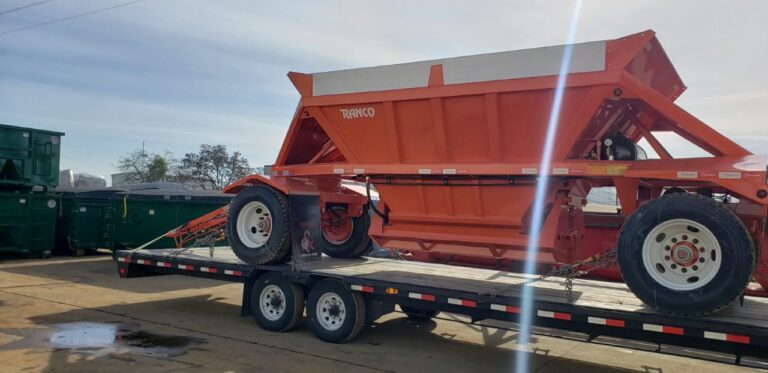Everything You Need to Know About Belly Dump Trailers

Everything You Need to Know About Belly Dump Trailers

William Thomas
Senior Logistics Manager
Everything You Need to Know About Belly Dump Hauling Trailers
Also known as bottom dump trailers, belly dump trailers are being an efficient and highly versatile way of shipping materials. These trailers have been allowed since the era of horse-drawn trailers. They are lightweights weighing 11000 lbs. with two axles. A typical 40-foot belly dump trailer equipped with a single hopper takes up about 21 cubic yards’ space. They are mainly used to transport heavy and loose materials such as gravel, dirt, construction materials, and demolition waste. Bottom dump trailers are also great in hauling coal, asphalt paving, and stockpiling. They are designed and constructed to minimize the cargo weight and increase payloads translating to quick turnaround times.
A typical belly dump trailer has a raised side and open top for easy loading. It also has a clamshell dump gate that makes it easy to dump the load right from under the box. This allows windrowing, which involves unloading materials in a long continuous line rather than a dumping pile. The trailers also have air cylinders operated from the trailers or connected to the truck cab. The cylinders are responsible for the opening and closing of the dump gate.
What Are the Advantages of Using Belly Dump Trailers to Transport Your Oversize Load?
Dump trailers can unload materials in a long line with the truck still moving. This makes it possible for them to spread the materials sufficiently over large areas. They are especially perfect in road construction as the paving machine transport does not have to wait until the materials have been fully unloaded. They are also easier and safer to operate than other dump trailers, especially since the load is always at the center and does not shift during the dumping process. Modern belly truck trailers come in tapered design with wider top openings than lower openings. With this, the materials can flow seamlessly without getting stuck inside the trailer.

They are also easier and safer to operate than other dump trailers, especially since the load is always at the center and does not shift during the dumping process.

Disadvantages of Belly Dump Hauling Trailers
When using belly dump trailers, the trailer axles must have clearance over the windrow. That said, these trailers should not transport larger materials that might easily hang up below the suspension. They are also not recommended when hauling fine or liquid materials that might easily leak from the bottom gate. Besides, operating side dump trailers might b restricted based on your region of operation.
Belly Dump Shipping Trailer Options
Tarp Systems: Bottom dump trailers can have incredible tarp systems, whether manual or electronic motorized. Flip tarps are the ideal tarp systems for these trailers as they can be used to cover irregular and sometimes heaped loads.
Suspension- Belly dump trailers are equipped with spring, air ride, or single-point suspension systems.
Push blocks: Push blocks provide a safe and reliable contact point to push belly dumps whenever they are stuck without damaging the frame or body. The push blocks are either bolted or welded onto the trailer.
There are other dump trailer options, including end and side dump trailers. Your ultimate trailer choice will depend on the nature of your load and your shipping needs.
Transport Your Belly Dump Trailer With Heavy Haulers Today!
Step 1: Fill Out Quote Form
Fill out the short & easy quote form.
Step 2: Speak With An Agent
We’ll pick up your heavy equipment or vehicle.
Step 3: Get Transported On Time
We deliver on time so you can get back to work.
